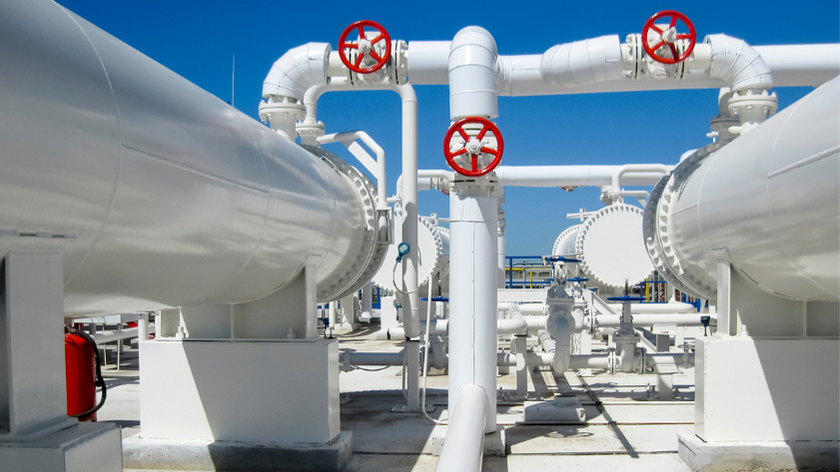Modern factories are investing in technology to reduce their energy consumption, costs and CO2 emissions. This is not new, but the process of digitalisation and decarbonisation has accelerated to meet global energy transition and sustainability goals.
In addition, the constant increase in energy costs pushes companies to become more efficient and reduce overall expenditure to stay competitive. If you want to reduce your internal costs to avoid increasing prices charged to your customers, you have to seek cost-saving options. You can start by establishing energy efficiency measures.
Worldwide, manufacturing is a major energy consumer. In the UK, the industrial sector accounted for 17% of the total consumption.
Fortunately, given this high percentage of energy consumption, there are options available to use it more efficiently and even reuse it. Waste heat from your machines is a source of energy that you can exploit.
What is this residual heat?
Waste heat or residual heat is the heat produced by your machinery when creating products and by-products. It can be intentionally-created heat or heat released from the simple industrial manufacturing process (metals, automotive products, tiles, food products, etc.).
It can be qualified as a consequence of the production process, usually lost in the air. This is perfectly normal, as your operations team is ensuring that the production process is running smoothly and at a good pace. You might however be interested to know that some of that heat can be harnessed as an energy source in your factory.
Interesting, isn’t it?
In this article, we look at how you can utilise that waste heat to generate energy, the benefits it can bring and how to measure the impact of your utilisation strategy.
Harnessing Waste Heat in your Factory
We know that waste heat is produced during manufacturing processes, but can it really be recovered?
Yes, waste heat can be converted into energy that can be reused in other production processes in your factory, or for heating, among other things.
This is a complex process, as waste heat exists in different states: gas, liquid or solid. It can also vary in temperature, another factor that needs to be taken into account when defining utilisation strategies.
Fortunately, many energy and industry professionals have already explored ways of harnessing this kind of heat. The main idea is to use thermoelectric generation processes, to produce energy through heat. Although further development is still underway, this technique includes storage and condensation pipes to collectors and transformers.
Before outlining the technical details for harnessing waste heat, it is essential to first identify where the waste heat can be recovered. In other words, which processes generate it and at what temperature. For instance, those machines such as a furnace or a foundry require more energy and heat than they used would be the first targets.
Your industrial processes do not include furnaces? Boilers, batteries and large-scale cooling appliances also produce heat that can be used.
Another way in which an industrial building can exploit waste heat is through the provision of waste heat storage points. These thermal storage solutions have been developed to enable the heat generated by industrial processes to be reused afterwards.
You can also make use of the waste heat from a machine that remains warm for a long time after it has been turned off. In this case, heat collectors are used to taking advantage of heat transfer by radiation.
Let’s illustrate the theory with examples:
The European Union is funding several Research and Development (R&D) projects. One of the most recent is ETEKINA, a project to recover up to 70% of waste heat in energy-intensive industries. It is a collaboration between Brunel University in London, a technology company specialising in heat recovery, and three factories in Spain, Slovenia and Italy. The sectors chosen for this project were aluminium, steel and ceramics manufacturing.
The aim of this project is to develop a solution, based on heat exchangers and pipes (pipelines), to recover waste heat in factories. The results of the study have been quite favourable, allowing the recovery of heat from industrial elements as diverse as air, water and oil.
Although the recovery of heat itself is no new idea, the implementation of such type of project especially for large-scale applications plays an essential role in the process of the energy transition, CO2 emission reduction and energy efficiency in Europe.
Benefits of Waste Heat Utilisation in your Factory
1. Energy Cost Savings
You are already spending a lot of money on energy supply to keep your factory running, but you are losing some along the way. Recovering waste heat and redirecting it to other areas of your factory, either for heating or to power other machinery will allow you to either run more processes for the same energy cost or reduce your energy consumption and production costs.
2. Energy Efficiency and Regulatory Compliance
Establishing energy saving measures in your factory means being aligned with the European Directive 2018/2002 on energy efficiency. Each country has developed its laws against climate change and in some cases, companies can be fined when not complying with the implemented energy efficiency measures.
It may not yet be a requirement for your industrial plant to submit sustainability reports, but by establishing energy efficiency measures you will already be ahead of future regulations and would have peace of mind.
3. Competitiveness and Investor Attraction
If everyone in the industry is making the most of their resources, you will then be pushed to do the same. However, you could decide to lead the way and stand out from the competition by differentiating yourself thanks to improving the functioning of your plants.
Banking facilities and public support have put in place energy efficiency and utilisation plans if you are looking for investment. They offer various ways of financing, as explained in this article on types of financing for energy efficiency projects, but generally speaking, increasing access to loans and grants requires companies to commit to reducing their pollutant emissions.
In all cases, setting energy efficiency and utilisation strategies will be of great help to your organisation.
Measuring the Impact of Your Leverage Strategy
To do so, you can start by looking at your bills and your production costs: Has your energy consumption decreased? Has your production changed?
Such a comparison can give you the first idea, but won’t probably be accurate, as you will have had to invest in reuse technology.
Using an Energy Management System (EMS) to track, compare historical data and establish other necessary energy saving measures in your industrial plant could address this potential lack of accuracy. With an EMS such as the DEXMA Platform, you can get access to the CO2 calculator, recommend energy efficiency measures and verify savings. All these elements are part of an energy management strategy and will help you to continue to be more efficient and productive in your organisation.
Interested in this article? Subscribe to the blog to receive our weekly articles. And don’t hesitate to contact us to find out more about how DEXMA can help you become more efficient.




